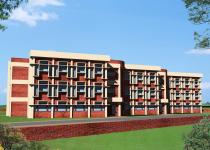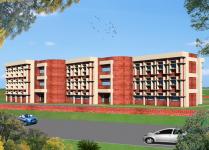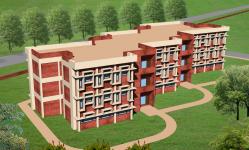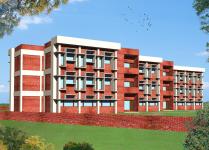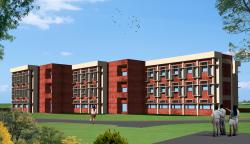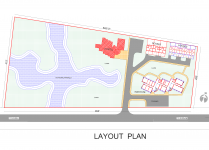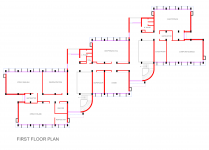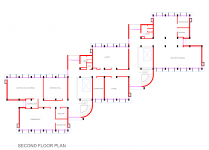An Industrial Training Institute (I.T.I.) was proposed to be set up at Boothgarh, a small village in the vicinity of Chandigarh. The site was selected in 1996 and plans were prepared, but due to the reasons best known to the political leadership of that time, the Institute was established at some other place nearby. As a result this design remained unrealized.
The Industrial Training Institutes are established by Department of Technical Education and Industrial Training with the aim to impart vocational training in Engineering as well as non-Engineering trades under craftsman training scheme to cater to the need of the industry in respect of skilled workers and technicians. These technicians are the backbone of the industries and play a vital role in the industrial progress.
The I.T.I. Boothgarh was proposed to be set up on a 6.73-acre site abutting Siswan-Kurali Road in the now District of S.A.S.Nagar. Since the area falls on the foothills of Shivalik Ranges, the land is undulatory with a network of seasonal rivulets or streams. The proposed site was no exception. The major part of the site was low lying and under seasonal stream – a sort of a catchment area for the rains. The remaining portion of the land was also too undulatory leaving limited pockets on south-east and north-east sides for development.
The campus was thus planned keeping in view the topographical conditions of the land. The placement of various components vis-à-vis the Institute, Hostel and Staff Quarters was done according to the availability of suitable space for the purpose. A small pocket on the southern side which incidentally falls towards the approach road was planned to accommodate the academic wing of the Institute. Likewise, a linear strip along the northern boundary which was also suitable for development was made to accommodate a Hostel Block and some staff quarters. The undulatory space in between the Institute and staff quarters was proposed to be developed as lawns for outdoor activities of students. All these components are linked and approached through a metalled road and pre-cast-concrete-tiled footpaths.
The design and juxtaposition of various building blocks have thus been evolved keeping in view its location, availability of space and topographical conditions of the site. The three-storied Institute building has been designed as a compact, linear, and zigzag block so as to make it fit on the allocated space. Its design is a pleasant combination of organic architecture with strict geometry. The geometrical order helped in simplifying the structural solutions with repetitive elements. This approach also helped in achieving the desired economy in the construction.
The building is designed in reinforced-cement-concrete frame structure with non load-bearing brick in-fill walls. Both these materials are truthfully left exposed on the exteriors to enhance the organic character of the building. All the internal surfaces have been proposed to be cement-plastered and painted for better illumination inside.
1996

